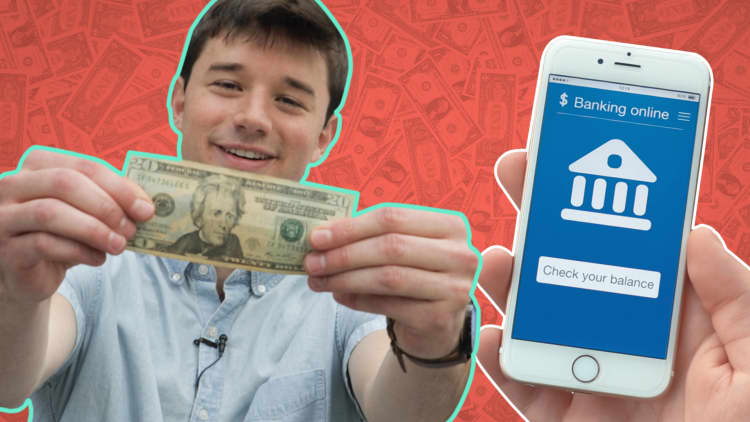Saving money isn’t nearly as fun as spending it, which is why so many of us need tools to keep us on track.
One simple trick for getting out of your own way is simply automating the process. Online banking platforms let you schedule regular transfers, meaning you can set an amount to be taken from your checking account and put into your savings without having to think about it.
I started doing this about a year ago and have saved up $4,400 since. (I'm guilty of dipping into it for a trip to Norway I took last fall.) It's a great start, but I still have a ways to go if I want a sufficient emergency fund, or about three to six months worth of living expenses, according to personal finance experts. For me, the high end of that range adds up to a considerable sum of roughly $10,000.
Most Americans have nowhere near that. Only 39 percent say they have enough saved up to cover a $1,000 emergency, a Bankrate survey recently found. Meanwhile, 20 percent say they aren't saving at all.

Of course, for many people saving isn't simple or easy. A portion of Americans spend their entire paycheck on rent, food and other necessary expenses, until there’s nothing left. Plus, most have debt to pay off.
But personal finance expert Dave Ramsey recommends prioritizing your emergency fund even if you’re in the red, because something could go wrong no matter how careful you are. In fact, Ramsey calls building a $1,000 emergency fund the first "baby step" toward becoming free from debt.
Once your emergency fund is established, you can automate your finances elsewhere — be it paying off your student loans, adding to your 401(k) or investing in index funds to build savings that you can grow and access without a penalty.
Don't miss: We looked at the 35 most popular travel credit cards—here's our pick for No. 1
Like this story? Subscribe to CNBC Make It on YouTube!




